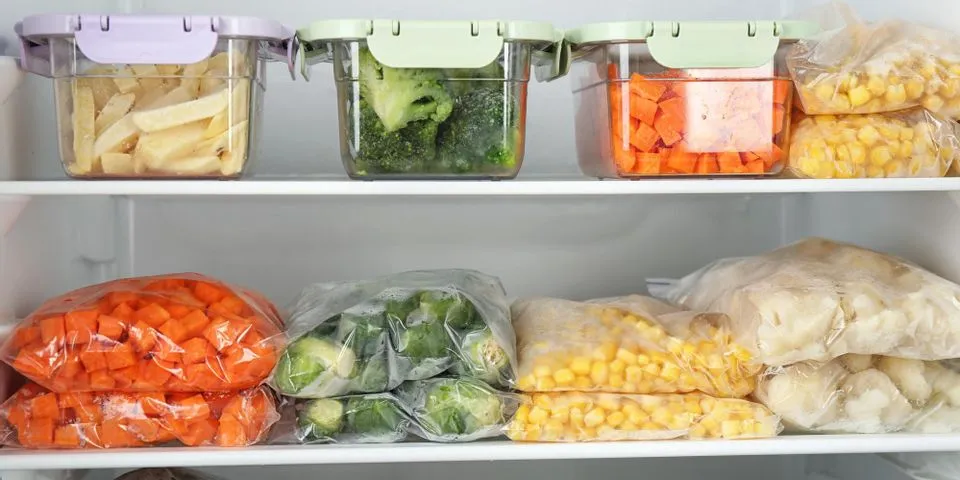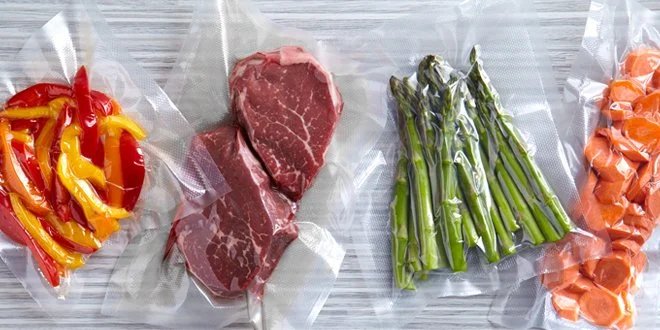The Science of Food Preservation
Why Does Food Go Rotten?
First, it's microbes that get food into trouble. In the process of production, transportation and storage, food is properly polluted by ubiquitous microorganisms in the environment. Their growth and breeding can decompose the nutrients in food and make the protein break down into peptides and organic acids, resulting in unpleasant odors. At this time, food also loses its original toughness and elasticity, with its color turning abnormal.
The second is the function of enzymes. Food often contains lipase, protease, amylase, polyphenol oxidase, peroxidase and so on. These enzymes can accelerate the metabolism of food and finally lead to deterioration. The spoilage of rice and rotten fruit that we can see every day are the result of fermentation caused by the decomposition of carbohydrates.
The third reason is the chemical reaction of food. There are unsaturated bonds in the molecular formula of many oils and fats in food. These bonds are very unstable and can be easily oxidized, resulting in a series of chemical reactions. The oxidized oils and fats have strange smells, and fat turns from white to yellow. For fruits and vegetables, vitamin C and natural pigments, like tomato pigments, will also be oxidized, which greatly influences the quality of food.
And the fourth is about moisture. Dry food can easily get wet for absorbing the moisture in the air, leading to poor taste and mildew.
All in all, the appearance of deteriorated food will change, and the original color, aroma and taste will lose, with the nutritional value being reduced, which will do harm to people's health. Therefore, food preservation can start from the following aspects: destroying the living conditions of microorganisms; preventing food from being exposed to the air; reducing the activity of enzymes; stopping food from being oxidized and damp.

Common Preservation Methods and Their Principles
1. Low-temperature Storage: Storing food at low temperatures can inhibit the activities of microorganisms and enzymes and slow down the deterioration of food within a certain period of time. There are two kinds of storage ways that are refrigeration and freezing. And refrigerators are the household appliances we commonly use.
2. Vacuum Preservation: It is also called decompression packaging, which means that all the air in the packaging will be pumped out and the packaging will be sealed to maintain a high decompression state in the bag. The scarcity of air is equivalent to the hypoxia effect, which makes most microorganisms lose their living conditions. Also, it isolates the contact of external bacteria to prolong the fresh-keeping period of food.
3. Dehydration and Drying: It is about reducing the moisture content of food and inhibiting the growth of spoilage microorganisms to keep food for a long time at normal temperature by means of sun exposure, drying in the shade and smoking over the fire. Dried sweet potato, dried beans, dried peppers, bacon and dried sausage are all the applications of dehydration and drying.
4. Chemical Preservation: Chemical preservation mainly includes sugaring, salting and vinegar pickling. Generally, when the salinity reaches 10%, most microorganisms can be inhibited instead of being killed. The sugar content of sugared food must reach 60%-65%. And this kind of food should also be kept in a sealed and moisture-proof condition, otherwise it will easily absorb water and reduce the anti-corrosion effect. Pickled fish, bacon, salted vegetables, preserved fruit and candied fruit are all made by this method. Vinegar pickling can increase the concentration of hydrogen ions, and it is often used for various vegetables, such as pickled cabbage and pickles.

First, it's microbes that get food into trouble. In the process of production, transportation and storage, food is properly polluted by ubiquitous microorganisms in the environment. Their growth and breeding can decompose the nutrients in food and make the protein break down into peptides and organic acids, resulting in unpleasant odors. At this time, food also loses its original toughness and elasticity, with its color turning abnormal.
The second is the function of enzymes. Food often contains lipase, protease, amylase, polyphenol oxidase, peroxidase and so on. These enzymes can accelerate the metabolism of food and finally lead to deterioration. The spoilage of rice and rotten fruit that we can see every day are the result of fermentation caused by the decomposition of carbohydrates.
The third reason is the chemical reaction of food. There are unsaturated bonds in the molecular formula of many oils and fats in food. These bonds are very unstable and can be easily oxidized, resulting in a series of chemical reactions. The oxidized oils and fats have strange smells, and fat turns from white to yellow. For fruits and vegetables, vitamin C and natural pigments, like tomato pigments, will also be oxidized, which greatly influences the quality of food.
And the fourth is about moisture. Dry food can easily get wet for absorbing the moisture in the air, leading to poor taste and mildew.
All in all, the appearance of deteriorated food will change, and the original color, aroma and taste will lose, with the nutritional value being reduced, which will do harm to people's health. Therefore, food preservation can start from the following aspects: destroying the living conditions of microorganisms; preventing food from being exposed to the air; reducing the activity of enzymes; stopping food from being oxidized and damp.

Common Preservation Methods and Their Principles
1. Low-temperature Storage: Storing food at low temperatures can inhibit the activities of microorganisms and enzymes and slow down the deterioration of food within a certain period of time. There are two kinds of storage ways that are refrigeration and freezing. And refrigerators are the household appliances we commonly use.
2. Vacuum Preservation: It is also called decompression packaging, which means that all the air in the packaging will be pumped out and the packaging will be sealed to maintain a high decompression state in the bag. The scarcity of air is equivalent to the hypoxia effect, which makes most microorganisms lose their living conditions. Also, it isolates the contact of external bacteria to prolong the fresh-keeping period of food.
3. Dehydration and Drying: It is about reducing the moisture content of food and inhibiting the growth of spoilage microorganisms to keep food for a long time at normal temperature by means of sun exposure, drying in the shade and smoking over the fire. Dried sweet potato, dried beans, dried peppers, bacon and dried sausage are all the applications of dehydration and drying.
4. Chemical Preservation: Chemical preservation mainly includes sugaring, salting and vinegar pickling. Generally, when the salinity reaches 10%, most microorganisms can be inhibited instead of being killed. The sugar content of sugared food must reach 60%-65%. And this kind of food should also be kept in a sealed and moisture-proof condition, otherwise it will easily absorb water and reduce the anti-corrosion effect. Pickled fish, bacon, salted vegetables, preserved fruit and candied fruit are all made by this method. Vinegar pickling can increase the concentration of hydrogen ions, and it is often used for various vegetables, such as pickled cabbage and pickles.

